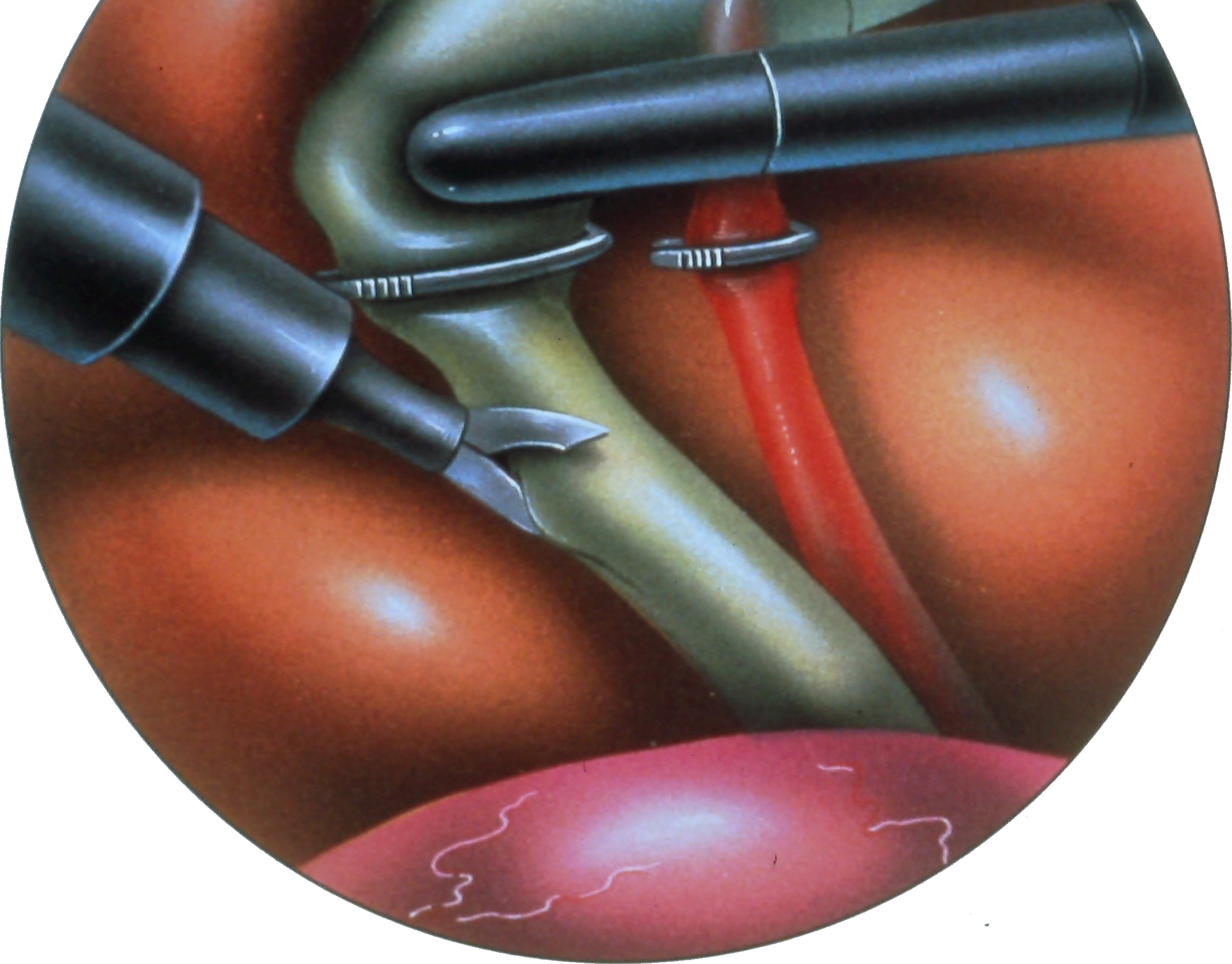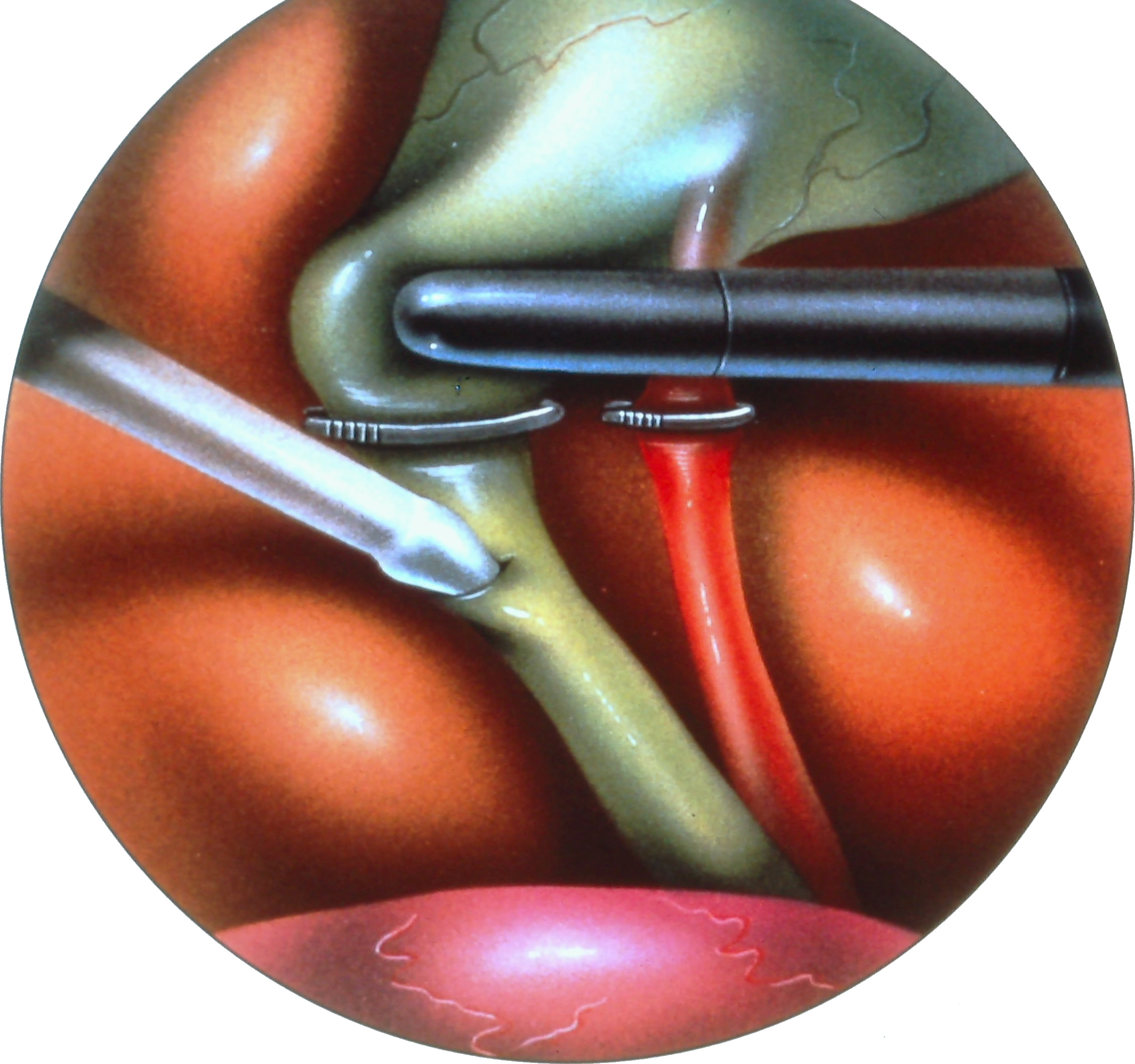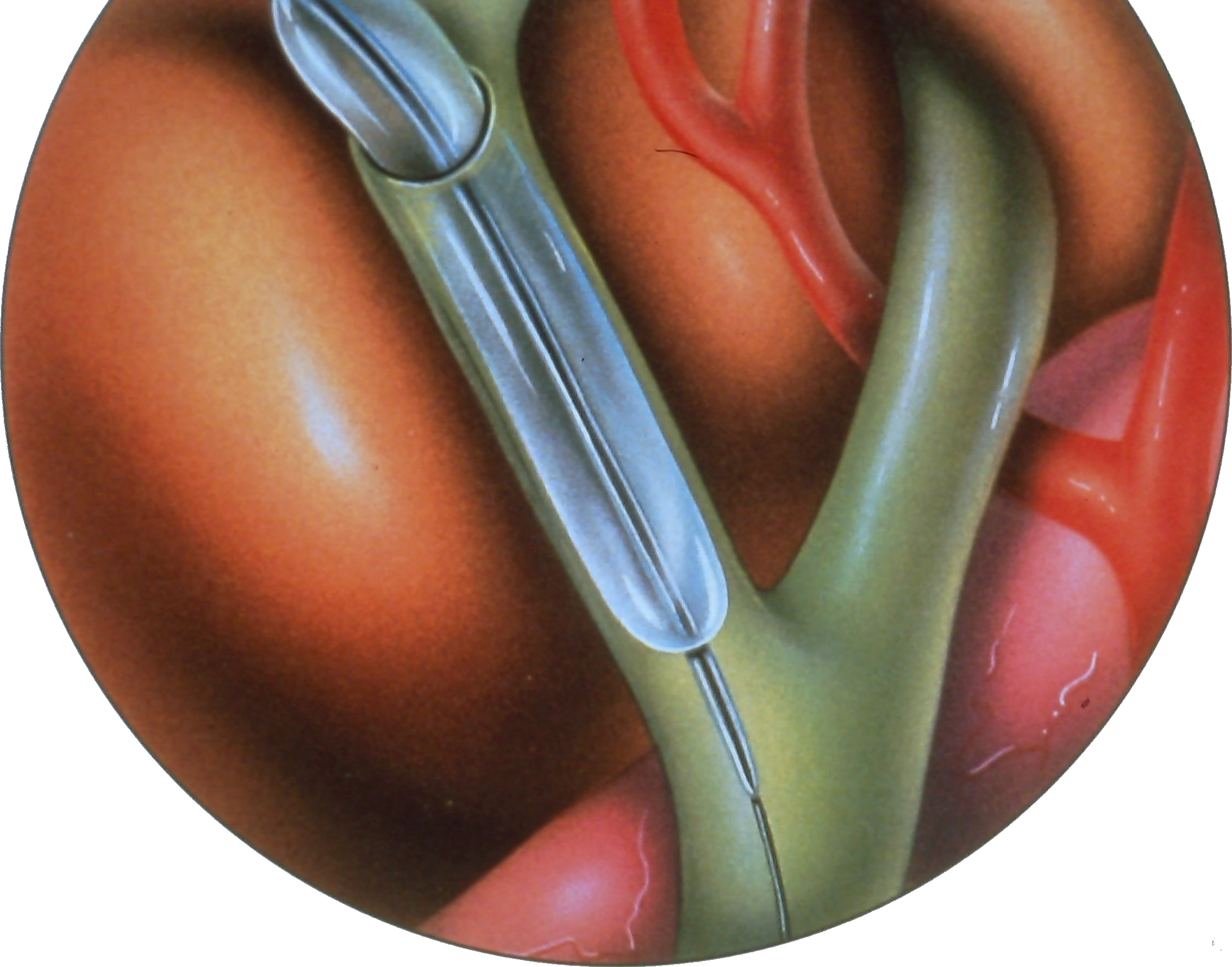Laparoscopic Common Bile Duct Exploration
A. The Condition. The bile duct connects your liver with your intestine. Sometimes this duct can become blocked with a gallstone. This can produce jaundice (yellow skin) and possibly severe infection. A laparoscopic common bile duct exploration is performed to removed these stones.
B. Symptoms
- Jaundice (yellow skin)
- Itching all over
- Very dark (tea-colored) urine
- Very light (clay-colored) stools
- Crampy pain abdominal pain
- In severe cases: fever, pain, jaundice, and confusion
C. Laparoscopic Common Bile Duct Exploration. Oftentimes the common bile duct exploration is done at the same time of a cholecystectomy (gallbladder removal). The surgeon will make about 3-4 small incisions in your abdomen. A port (nozzle) is inserted into one of the slits, and carbon dioxide gas inflates the abdomen. This process allows the surgeon to see inside of your abdomen more easily. A laparoscope is inserted through another port. The laparoscope looks like a telescope with a light and camera on the end so the surgeon can see inside the abdomen. Surgical instruments are placed in the other small openings and used to explore the common bile duct and remove any stones. This is done by making a small cut on the duct, and then inserting a flexible scope and flexible instruments inside the duct. Stones are removed with metal snares. After the duct has been explored and cleaned, the carbon dioxide is released out of the abdomen through the slits, and then these sites are closed with sutures or staples, or covered with glue-like bandage and steri-strips. A temporary rubber drain (pencil-thin tube) may be left in your common bile duct, with the end of this drain exiting from your skin.
D. Nonsurgical Treatment. Sometimes stones in the common bile duct are removed by placing a scope down your throat and into your intestine. This is known as an ERCP. Or, a catheter can be inserted into your side to gain access into the bile duct. This is known as a PTC. Your doctors can discuss with you the best approach to treat your problem.
E. Risks. The primary risks of common bile duct exploration are:
- Infection of the skin at one of the small ports sites
- Collection of pus inside your abdomen (intraabdominal abscess)
- Injury of the common bile duct
- Postoperative ileus (the intestines slow down/stop working for several days)
- Leakage of bile
F. Expectations
1. Before Your Operation. Laparoscopic common bile duct exploration usually is an elective procedure. The preoperative evaluation might include blood work, urinalysis, and abdominal ultrasound, and an abdominal CT scan. In some cases, endoscopy and/or x-rays of your bile duct may be performed. If you smoke, then you should stop immediately. If you are taking blood thinners (for example, aspirin, coumadin, Lovenox, or Plavix), then you will need to stop these one week prior to your procedure. Your surgeon and anesthesia provider will review your health history, medications (including blood thinners), and options for pain control.
2. Your Recovery. You usually can go home in 1 or 2 days after a laparoscopic common bile duct exploration. You will be given medication for pain, and you may be given antibiotic pills. You may have a drain in place (see above), for which you will receive specific instructions for care. You should limit your activity to light lifting (no more than 15 lb) for one month.
3. Call Your Surgeon if you have one or more of the following:
- Severe pain
- High fever
- Increasing jaundice
- Odor or increased drainage from your incision
- No bowel movements for three days
G. Pertinent References
Carlson MA, Ludwig KA, Frantzides CT, Cattey RP, Henry LG, Walker AP, et al. Routine or selective intraoperative cholangiography in laparoscopic cholecystectomy. J Laparoendosc Surg. 1993;3(1):27-33.
Ludwig, K.A., and Frantzides, C.T.: Laparoscopic cholecystectomy. In Laparoscopic and Thoracoscopic Surgery. Ed. Frantzides, Mosby-Yearbook Inc., 1994.
Frantzides CT, Carlson MA, Luu M. “Laparoscopic Cholecystectomy.” In: Frantzides CT, Carlson MA, eds. Atlas of Minimally Invasive Surgery. Philadelphia: Saunders Elsevier 2009.
Petelin JB. “Laparoscopic Common Bile Duct Exploration and Intraoperative Cholangiography.” In: Frantzides CT, Carlson MA, eds. Atlas of Minimally Invasive Surgery. Philadelphia: Saunders Elsevier 2009.



